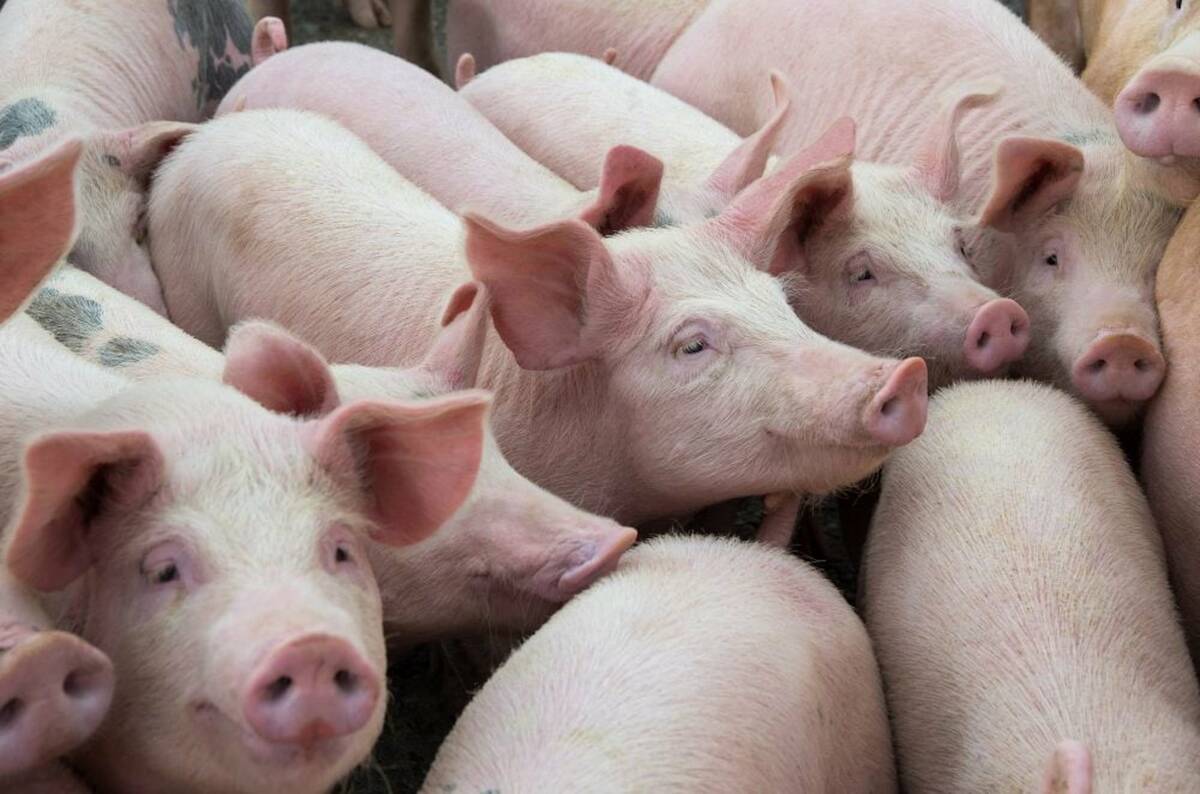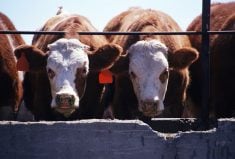Compared to last week, western Canadian feeder cattle sold $4-$6 lower on average. Feedlot operators backed away from the markets due to stronger feed grain prices and weakness south of the border. Certain regions of the U.S. Midwest and southern Plains have experienced adverse weather, which caused U.S. feeder cattle prices to experience a week-over-week decline of $5-$7.
Feedlot margins are hovering in negative territory and these feeder markets are still too high to pencil a margin for the summer timeframe. Alberta barley prices appear to be percolating higher, and with the weaker Canadian dollar, imported corn is also more expensive. The uncertainty in feed grain prices has caused buyers to incorporate a risk discount for replacement cattle.
Read Also

U.S. livestock: Hogs rise ahead of ‘Hogs and Pigs’ report
Chicago cattle futures continued to inch upward on Monday. Hogs also rose in anticipation of Tuesday’s Hogs and Pigs report….
In central Alberta, medium- to larger-frame fleshier tan steers weighing just over 800 lbs. sold for $181; Angus-based medium-frame heifers averaging 825 lbs. traded for $176. Charolais-blended larger-frame fleshier steers averaging 700 lbs. sold for $190; similar quality tan heifers averaging 700 lbs. sold for $177. Simmental mixed steers averaging 600 lbs. were quoted at $204, while similar heifers were quoted at $177.
In Manitoba, Limo-based larger-frame fleshier steers averaging just over 700 lbs. were quoted at $195 while Simmental mixed medium-frame heifers weighing 750 lbs. were quoted at $171. Charolais mixed steers weighing 612 lbs. traded for $208 and Angus mixed heifers averaging 610 lbs. were valued at $178. The market was relatively flat across the Prairies, with sluggish buying interest noted from U.S. and Ontario feedlots. Late year-end buying surfaced in southern Alberta, but the limited orders failed to strengthen the overall market in this region.
The expected year-over-year increase in 2019 third-quarter beef production is a lead weight hanging on the nearby feeder market. While feedlot margins may improve in the first quarter of 2019, second- and third-quarter financial returns will likely hover in negative territory. Buyers have a very cautious tone in the short term. Remember, January and February of 2018 were not favourable months for the feeder market and feedlots believe prices could experience a similar pattern in 2019.
















